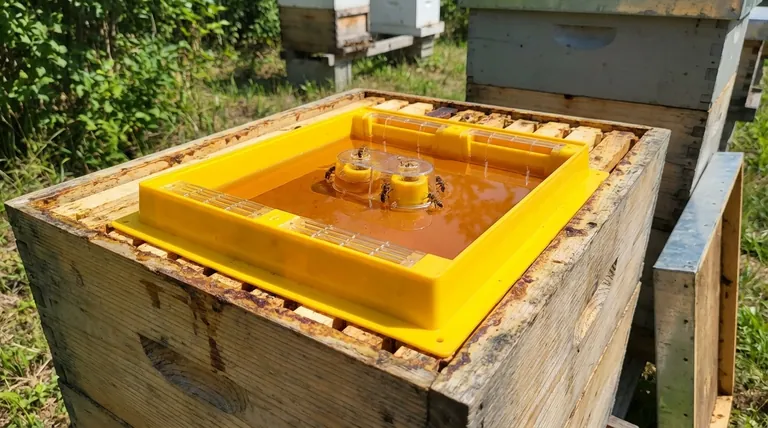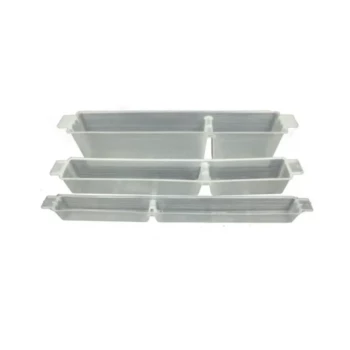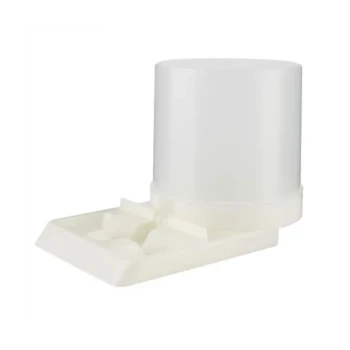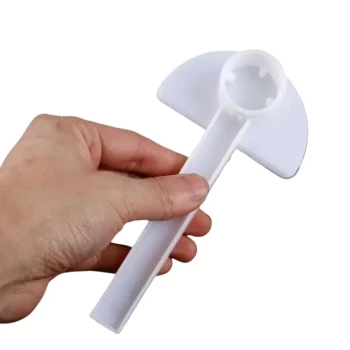At their core, hive-top feeders offer a unique combination of large capacity and minimal colony disturbance. Compared to other internal methods, they excel at delivering significant amounts of syrup safely and efficiently, without requiring the beekeeper to fully open the hive. This design minimizes stress on the bees and reduces the risk of drowning, making them a powerful tool for specific management goals.
The choice of a feeding system is a strategic decision that balances bee safety, hive stability, and beekeeper efficiency. While no single feeder is perfect for every situation, hive-top feeders provide an unparalleled advantage when delivering large volumes of feed is the primary objective.

The Core Advantages of Hive-Top Feeders
Hive-top feeders are designed to sit directly on top of the uppermost hive box, but below the outer cover. This positioning is the source of their key benefits.
Advantage 1: Maximizing Bee Safety
The most significant advantage is the drastic reduction in bee mortality. Unlike open pails or some frame feeders, hive-top feeders have protected access channels.
Bees can climb down these channels or ladders to reach the syrup and return to the cluster without the risk of falling into a large reservoir and drowning.
Advantage 2: Maintaining Colony Stability
Refilling a hive-top feeder causes almost no disruption to the colony's internal environment. You simply remove the outer cover to access the feeder's reservoir.
This means you do not need to break the propolis seal of the inner cover or expose the brood nest to the outside air. The colony's crucial temperature, humidity, and pheromone balance remain intact.
Advantage 3: Enhancing Beekeeper Efficiency
Because you don't disturb the colony, you can often refill the feeder quickly and safely without wearing a full bee suit or using a smoker.
Furthermore, these feeders typically hold one to four gallons of syrup. This large capacity means fewer trips to the apiary are needed for feeding, saving significant time and labor, especially during periods of heavy feeding.
Advantage 4: Versatility Across Hive Types
The design principle of a hive-top feeder is simple and adaptable. They are widely available and can be built for the most common hive styles, including Langstroth and Warré hives, ensuring a consistent feeding strategy across different equipment.
Understanding the Trade-offs and Limitations
While powerful, hive-top feeders are not without their potential downsides. Objectively assessing these trade-offs is critical for effective hive management.
Potential for Heat Loss
In colder climates, a large, vented feeder can act as a source of heat loss, sitting directly above the warm bee cluster. An empty feeder can create a cold air pocket, forcing the bees to expend more energy to maintain temperature.
Risk of Leaks and Spills
A poorly constructed or improperly seated feeder can leak syrup. A leak inside the hive can drown bees and create a sticky mess, while a leak outside the hive can quickly incite robbing from other colonies, which can be devastating to a weak hive.
Initial Cost and Storage
Hive-top feeders are generally more expensive than simpler methods like frame or baggie feeders. They are also bulky items that require dedicated space for storage when not in use.
How Hive-Top Feeders Compare to Other Methods
Understanding where hive-top feeders fit requires comparing them to the other common internal options.
vs. Frame Feeders (Division Board Feeders)
Frame feeders replace one or two frames inside the brood box. They place the food very close to the bees, but they hold less syrup, take up valuable brood space, and require you to fully open the hive for refills. Many designs also pose a significant drowning risk if not equipped with adequate floats or ladders.
vs. Baggie Feeders
Baggie feeders are simply plastic bags of syrup placed on the top bars, with small slits for access. They are extremely cheap and disposable, but they have a very small capacity, require frequent replacement, and carry a high risk of bursting and flooding the colony with syrup.
vs. Entrance Feeders
Though often considered external, entrance feeders connect directly to the hive's interior. They are easy to monitor and refill, but their capacity is very small. More importantly, their position at the entrance is a major attractant for robber bees and can chill the hive.
Making the Right Choice for Your Goal
Your feeding strategy should be dictated by your specific management objective.
- If your primary focus is rapid colony build-up or winter preparation: A hive-top feeder is the superior choice due to its large capacity and minimal colony disturbance.
- If your primary focus is providing a small amount of emergency feed: A frame feeder or baggie feeder can be a cost-effective and adequate solution.
- If your primary focus is cost-minimization for a small number of hives: Baggie feeders are the cheapest option, but you must accept the risks and high-touch labor involved.
Ultimately, selecting the right feeder is about choosing the correct tool to support a healthy, productive, and stress-free colony.
Summary Table:
| Feature | Hive-Top Feeder | Frame Feeder | Baggie Feeder |
|---|---|---|---|
| Capacity | High (1-4 gallons) | Medium | Low |
| Colony Disturbance | Minimal | High | High |
| Bee Drowning Risk | Low | High | High |
| Best For | Large-scale feeding, winter prep | Small-scale, emergency feed | Low-cost, minimal use |
Ready to elevate your apiary's efficiency and bee safety? HONESTBEE supplies commercial apiaries and beekeeping equipment distributors with high-quality, durable hive-top feeders designed for large-volume feeding with minimal colony stress. Our wholesale-focused operations ensure you get the reliable equipment you need to support healthy, productive colonies. Contact our team today to discuss your needs and discover the HONESTBEE advantage!
Visual Guide

Related Products
- Professional Hive Top Bee Feeder for Beekeeping
- HONESTBEE Professional Hive Top Bee Feeder Feeding Solution
- Professional Hive Front Entrance Bee Feeder
- Boardman Entrance Bee Feeder Durable Galvanized Steel and Wood Construction for Beekeeping
- HONESTBEE Round Hive Top Bee Feeder for Syrup
People Also Ask
- What types of hive boxes is the round hive top feeder compatible with? Universal Fit for 8 & 10-Frame Langstroth Hives
- How to use a top feeder in a beehive? A Guide to Effective Beehive Feeding
- What are the advantages of using top feeders for bees? Maximize Feeding Efficiency & Colony Safety
- Why is a top feeder essential for bees? Ensure Colony Health and Efficiency
- Do I need an inner cover with a hive top feeder? Optimize Your Hive Setup for Healthy Bees



















